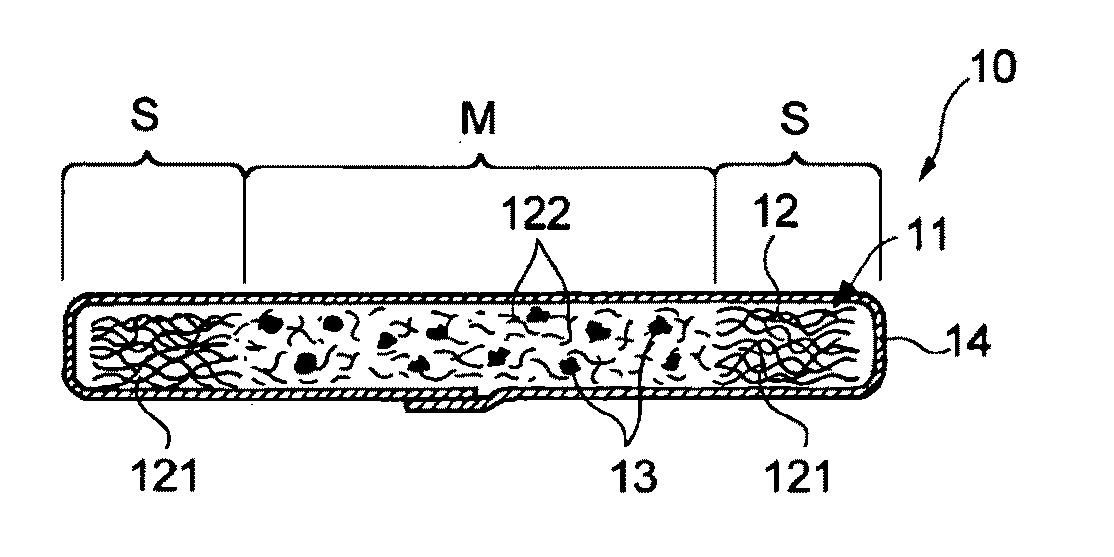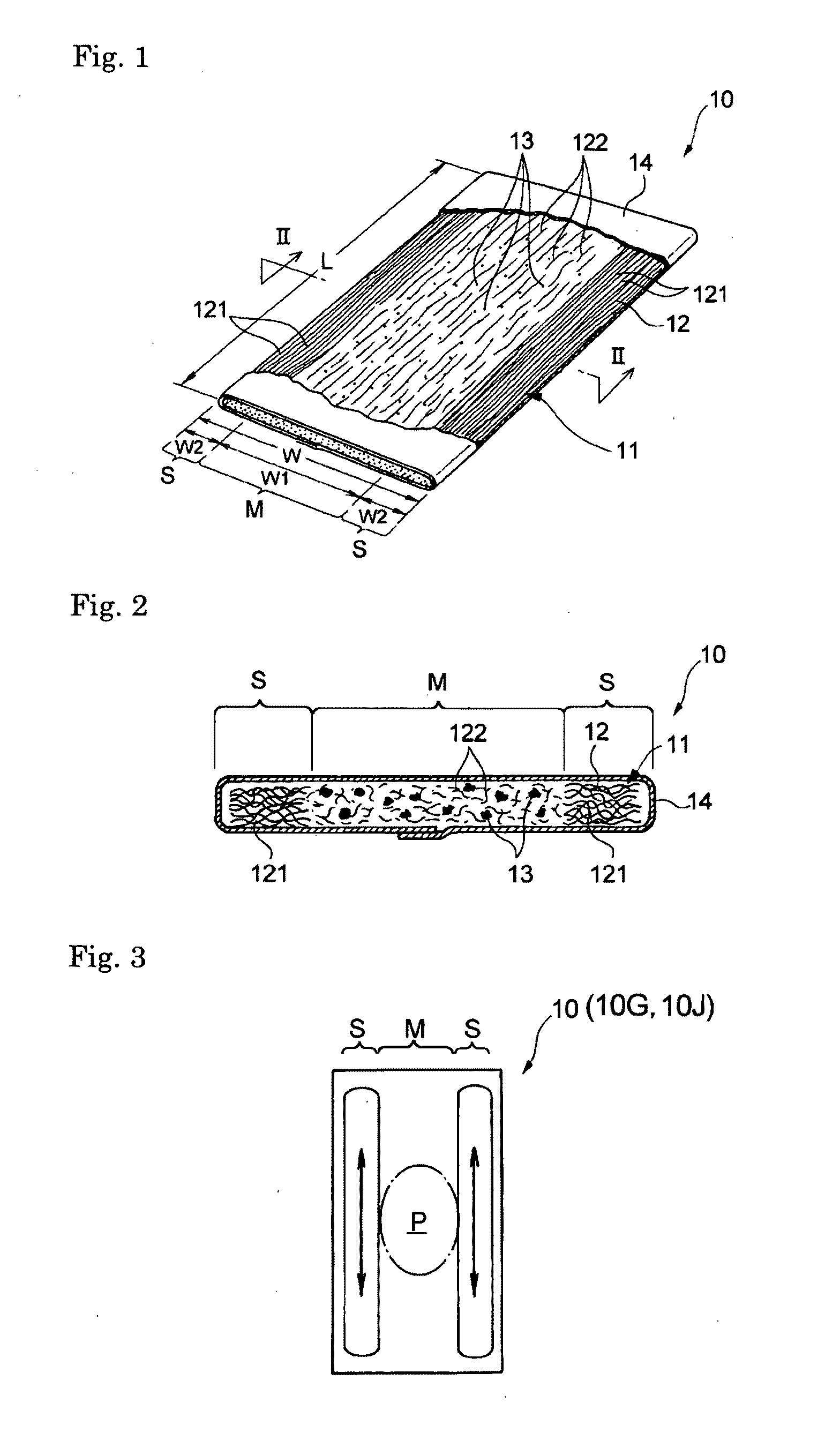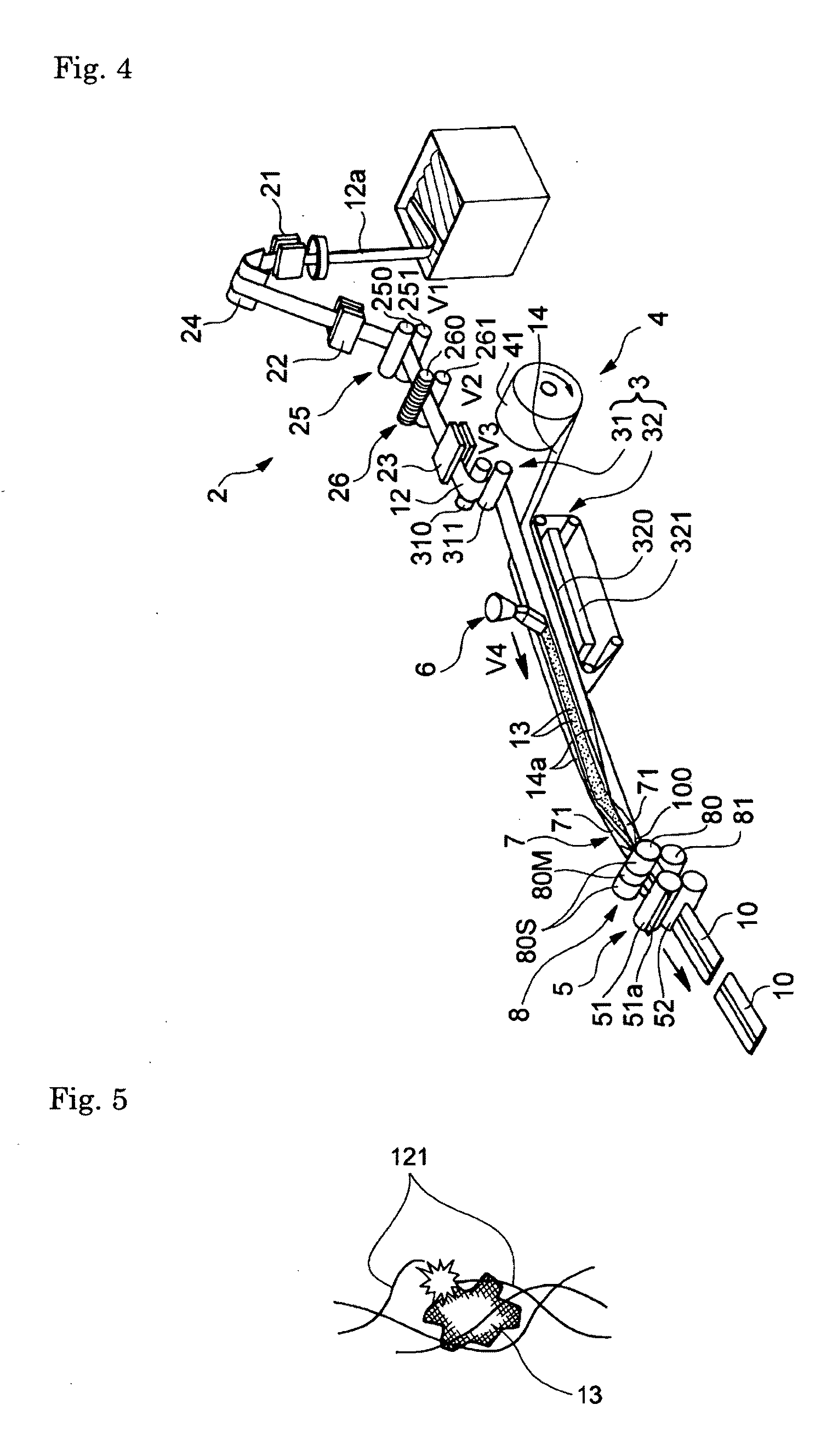Absorbent Member and Method of Producing the Same
a technology of absorbent parts and absorbent parts, which is applied in the field of absorbent parts, can solve the problems of reducing the wearing comfort of the absorbent article, increasing the thickness of the absorbent member, and inferiority of cellulose acetate fibers to pulp absorbency
- Summary
- Abstract
- Description
- Claims
- Application Information
AI Technical Summary
Benefits of technology
Problems solved by technology
Method used
Image
Examples
example 1
[0492]A tow of crimped, continuous cellulose acetate fibers was prepared. The individual continuous fibers had a thickness of 2.1 dtex, and the total linear density of the tow was 25,000 dtex. The tow was fed under tension and opened in an air opening unit. The tow-opened web was passed between a roller having a large number of discs arrayed around its periphery in an axial direction at a given interval and a smooth anvil roller, between which the web was combed. The width of the web was adjusted to 100 mm. The running speed of the web was slowed down, and the web was transferred onto a vacuum conveyor. The web on the vacuum conveyor was released from the tension to develop the crimp. The continuous fibers of the web had a crimp percentage of 30%, and the number of the crimps per centimeter was 15. The fiber interstices in the web were thus broadened to help an absorbent polymer enter and to make the web bulkier thereby to improve polymer supporting capability. In this state, an abs...
example 2
[0496]A tow-opened web having an absorbent polymer embedded therein was prepared in the same manner as in Example 1, except that the polymer was spread intermittently. Specifically, the polymer was spread on a laterally middle portion of the web having a width of 80 mm and extending from a position 100 mm away from the front edge to a position 350 mm away from the front edge (over an area of 80 mm in the web width direction by 250 mm in the web length direction). Opened fluff pulp was airlaid in a frame having the same shape as that used in Example 1 to make an airlaid fiber layer having a basis weight of 100 g / m2. The web was superposed on the airlaid fiber layer, and the laminate was wrapped in a hydrophilized spunbonded-meltblown-meltblown-spunbonded (SMMS) nonwoven fabric having a basis weight of 16 g / m2. The wrapped laminate was compressed between a metal roller and a rubber roller in the same manner as in Example 1 to cut the fibers constituting the web.
[0497]The web (the fibe...
example 3
[0498]A web (designated web P1) having an absorbent polymer embedded therein was prepared in the same manner as in Example 1.
[0499]Bicomponent conjugate fibers having a polyethylene sheath and a polypropylene core (3.3 dtex, 51 mm, having been surface treated with a surface active agent to have hydrophilic properties and antistatic properties) were carded to make a web (designated web P2) having a basis weight of 30 g / m2. The resulting web P2 made of synthetic fibers was superposed on the web P1 having the absorbent polymer embedded therein.
[0500]Separately, 100 parts by weight of fluff pulp and 100 parts by weight of an absorbent polymer were uniformly mixed in an air stream and accumulated within a T-shaped frame to make an airlaid fiber layer weighing 300 g / m2 (the same as the one used in Example 1). The airlaid fiber layer was superposed on tissue paper having a basis weight of 16 g / m2 and having a hot-melt adhesive previously sprayed thereto. The above prepared laminate of P1 a...
PUM
| Property | Measurement | Unit |
|---|---|---|
| Volume | aaaaa | aaaaa |
| Length | aaaaa | aaaaa |
| Length | aaaaa | aaaaa |
Abstract
Description
Claims
Application Information
 Login to View More
Login to View More - R&D
- Intellectual Property
- Life Sciences
- Materials
- Tech Scout
- Unparalleled Data Quality
- Higher Quality Content
- 60% Fewer Hallucinations
Browse by: Latest US Patents, China's latest patents, Technical Efficacy Thesaurus, Application Domain, Technology Topic, Popular Technical Reports.
© 2025 PatSnap. All rights reserved.Legal|Privacy policy|Modern Slavery Act Transparency Statement|Sitemap|About US| Contact US: help@patsnap.com



